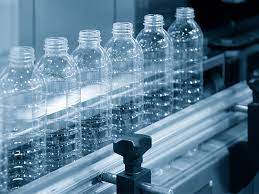Source: Link Testing Instruments Co.,Ltd.
With the development of the beverage industry and packaging industry, PET bottles are gradually entering the beverage packaging market. Ordinary PET bottles have been widely used in the packaging of cosmetics, medicine, health care, beverages, mineral water, engine oil and other products. , the PET bottle needs to have better barrier properties. Taking moisture resistance as an example, if the PET bottle packaging has poor moisture resistance in a high-humidity environment, that is, the water vapor transmission rate is too high, it will seriously affect the taste of beverage products, affecting The brand image of the enterprise, in order to improve the barrier performance of PET bottles, PET bottles are usually modified, such as by coating silicon oxide and amorphous carbon on the surface of PET bottles. Therefore, before beverage manufacturers choose and use PET bottles, it is essential to test their moisture barrier properties.

Test Methods and Instruments
The domestic relevant container packaging water vapor transmission rate test method is mainly the infrared sensor detection method, according to the national standard GB/T 31355-2014 "Packaging and Container Water Vapor Transmission Test Method Infrared Method Sensor Method", this standard specifies the How to use the infrared sensor method to test the water vapor transmission rate of packages and containers under steady state conditions. This test can choose the LTWTC-303H vapor transmission rate test system developed and produced by Link Testing
Test principle: LTWTC-303H adopts the test principle of infrared sensor method, the pre-treated sample is clamped between the test chambers, nitrogen with stable relative humidity flows on one side of the film, and dry nitrogen flows on the other side of the film ;Due to the existence of the humidity gradient, water vapor will diffuse from the high humidity side through the film to the low humidity side; on the low humidity side, the permeated water vapor is carried to the infrared sensor by the flowing dry nitrogen, and the same proportion of electricity will be generated when entering the sensor. Signal, through the analysis and calculation of the electrical signal of the sensor, so as to obtain the water vapor transmission rate and other parameters of the sample. For packaging containers, dry nitrogen flows in the container, and the outside of the container is in a high humidity state.
Test sample and test process
Test sample: PET plastic bottle packaging provided by a company.
Experimental procedure:
(1) Coat the mouth of the bottle with quick-curing glue to fix it on the container test tray device dedicated to the instrument. After the seal is completed, connect it to the instrument with a pipeline, and then use a sealed bag to seal the sample and the tray device. Apply an airtight wrap.
(2) Set the sample name, test temperature, test humidity and other parameters.
(3) Adjust the pressure of nitrogen to make the humidity in the test chamber reach the set value, and adjust the nitrogen flow through the nitrogen flow adjustment knob to make the nitrogen flow in the upper and lower chambers reach the standard specified value.
(4) Click the Start Test option to start the test. The instrument automatically records the change of water molecule content on the low humidity side during the test, and calculates the final test result.
Test Results and Analysis
The average water vapor transmission rate of the PET bottle samples tested this time is: 0.0045g/(pkg·24h).
LTWTC-303H Water Vapor Transmission Rate Test System is a professional testing equipment for testing the barrier performance of containers, films and sheets to the outside water vapor. It has the advantages of high detection accuracy and good repeatability of test results, and can truly reflect wine packaging. The water vapor transmission rate of PET plastic bottles. In addition to water vapor transmission rate testing, attention should also be paid to key items such as the overall sealing performance of PET plastic bottle packaging and the opening force of bottle caps.
For more details please visit www.linktesting.org